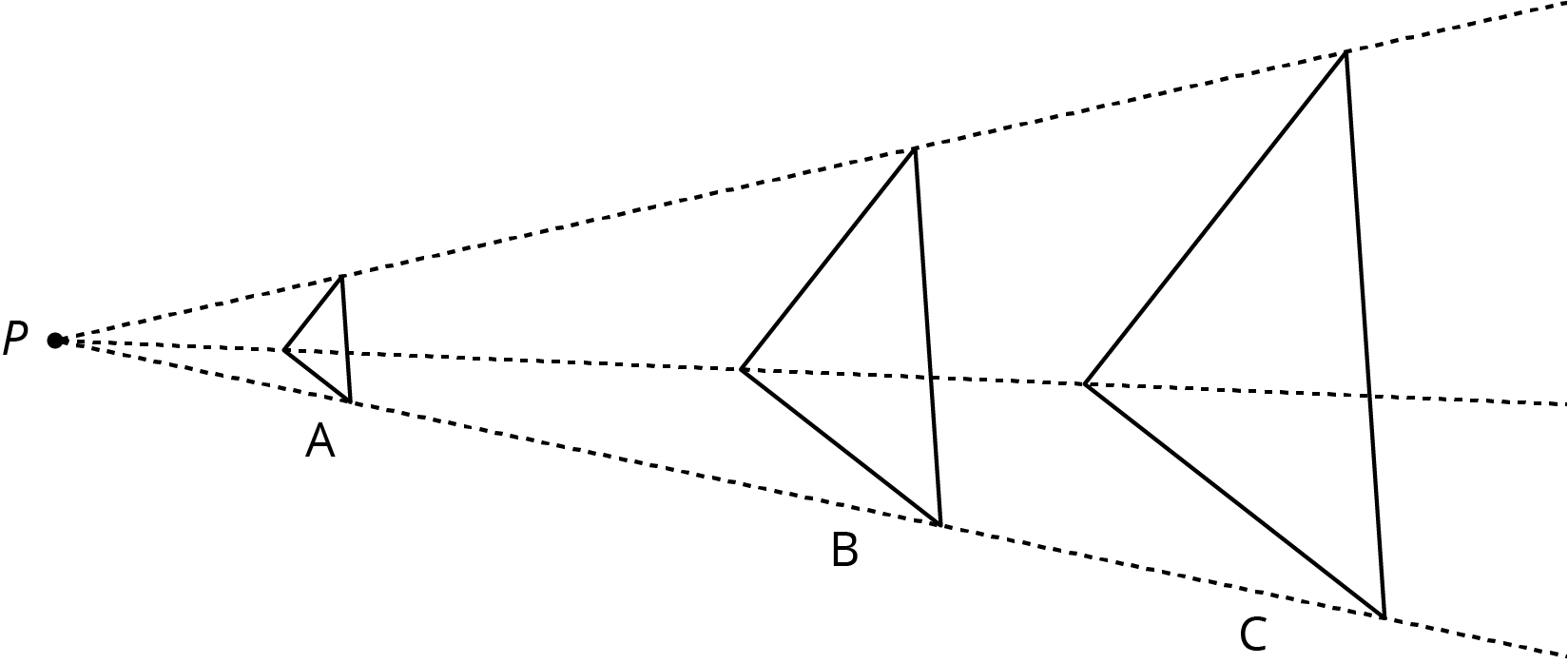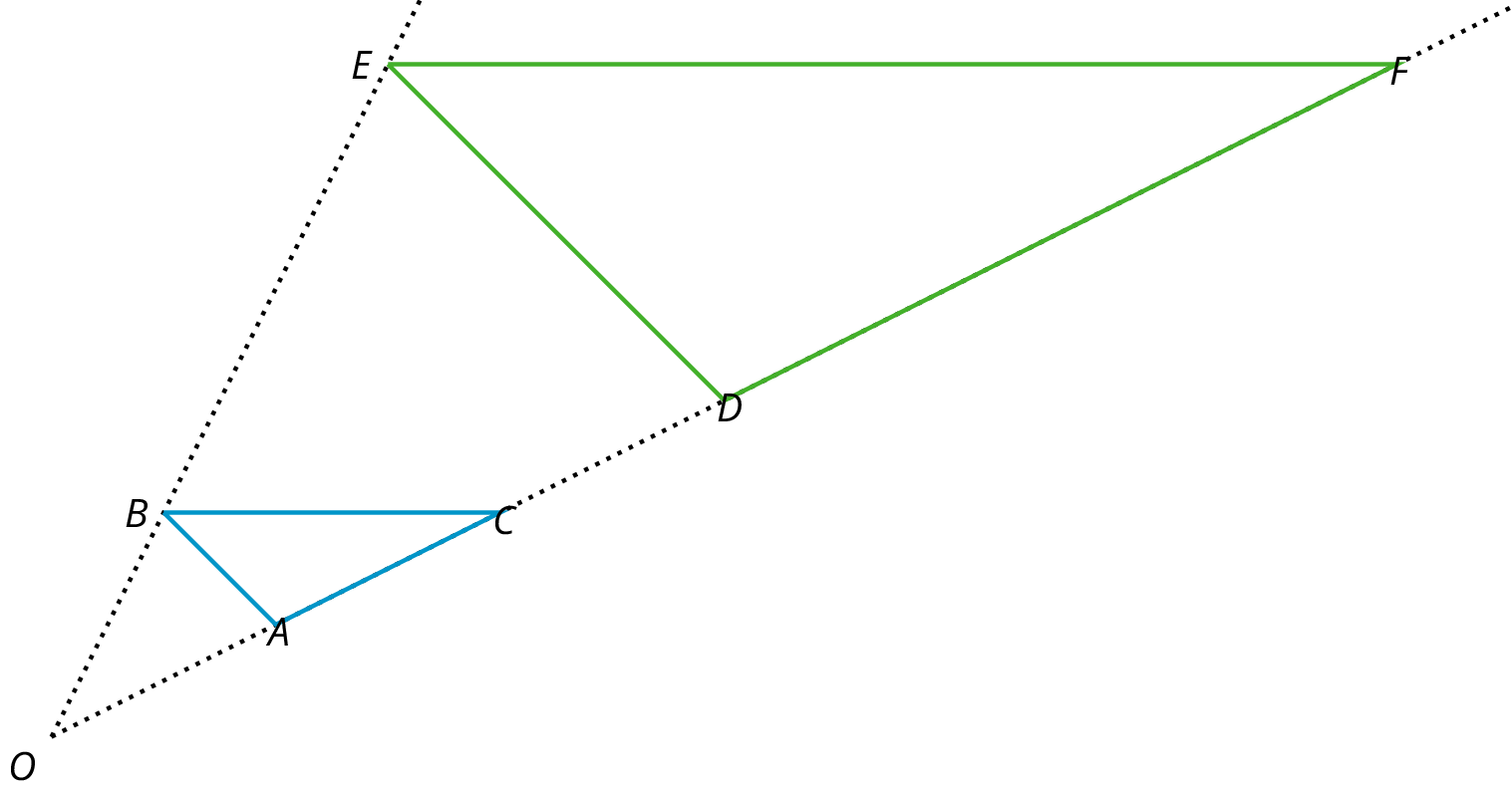Lesson 2
Circular Grid
Lesson Narrative
The previous lesson introduced the general idea of a dilation as a method for producing scaled copies of geometric figures. This lesson formally introduces a method for producing dilations. A dilation has a center and a scale factor. For a dilation with center \(P\) and scale factor 2, for example, the center does not move. Meanwhile each point \(Q\) stays on ray \(PQ\) but its distance from \(P\) doubles (because the scale factor is 2).
A circular grid is an effective tool for performing a dilation. A circular grid has circles with radius 1 unit, 2 units, and so on all sharing the same center. Students experiment with dilations on a circular grid, where the center of dilation is the common center of the circles. By using the structure of the grid, they make several important discoveries about the images of figures after a dilation including:
- Each grid circle maps to a grid circle.
- Line segments map to line segments and, in particular, the image of a polygon is a scaled copy of the polygon.
The next several lessons will examine dilations on a rectangular grid and with no grid, solidifying student understanding of the relationship between a polygon and its dilated image. This echoes similar work in the previous unit investigating the relationship between a figure and its image under a rigid transformation.
As with previous geometry lessons, students should have access to geometry toolkits so they can make strategic choices about which tools to use (MP5).
Learning Goals
Teacher Facing
- Comprehend that “a point on the circle” (in written and spoken language) refers to a point that lies on the edge of the circle and not in the circle’s interior.
- Create dilations of polygons using a circular grid given a scale factor and center of dilation.
- Explain (orally) how a dilation affects the size, side lengths and angles of polygons.
Student Facing
Let’s dilate figures on circular grids.
Required Materials
Learning Targets
Student Facing
- I can apply dilations to figures on a circular grid when the center of dilation is the center of the grid.
Glossary Entries
-
center of a dilation
The center of a dilation is a fixed point on a plane. It is the starting point from which we measure distances in a dilation.
In this diagram, point \(P\) is the center of the dilation.

-
dilation
A dilation is a transformation in which each point on a figure moves along a line and changes its distance from a fixed point. The fixed point is the center of the dilation. All of the original distances are multiplied by the same scale factor.
For example, triangle \(DEF\) is a dilation of triangle \(ABC\). The center of dilation is \(O\) and the scale factor is 3.
This means that every point of triangle \(DEF\) is 3 times as far from \(O\) as every corresponding point of triangle \(ABC\).

Print Formatted Materials
For access, consult one of our IM Certified Partners.
Additional Resources
| Google Slides | For access, consult one of our IM Certified Partners. |
|
| PowerPoint Slides | For access, consult one of our IM Certified Partners. |